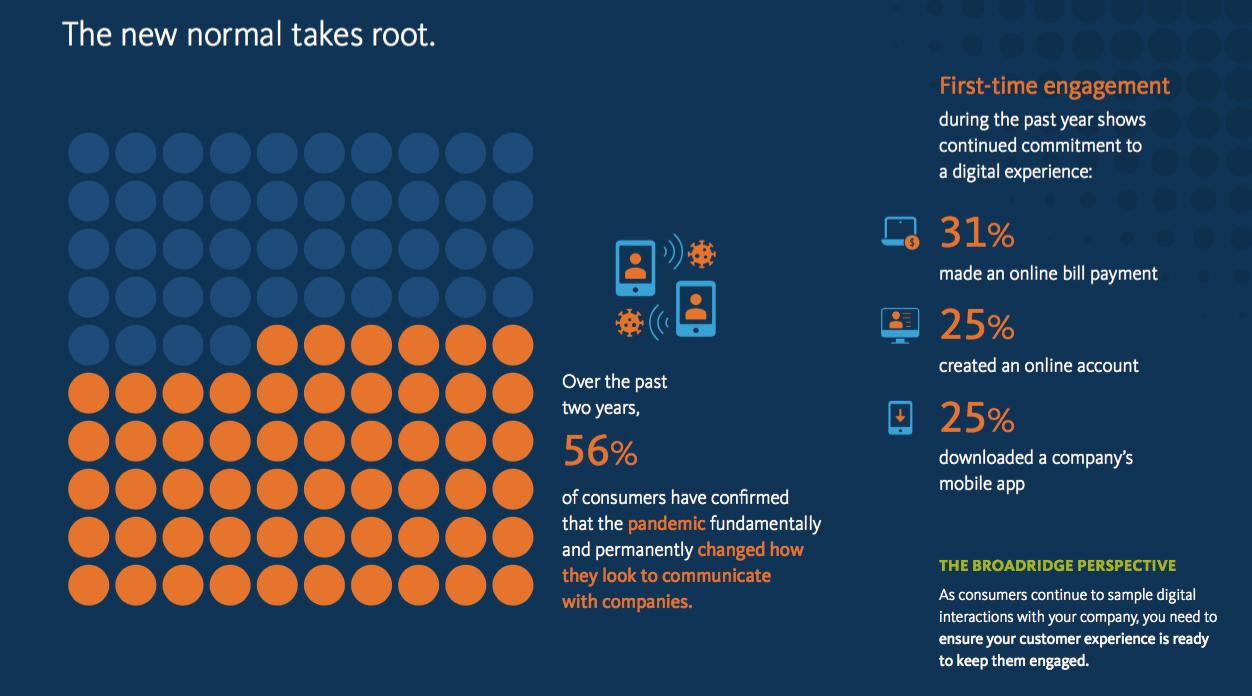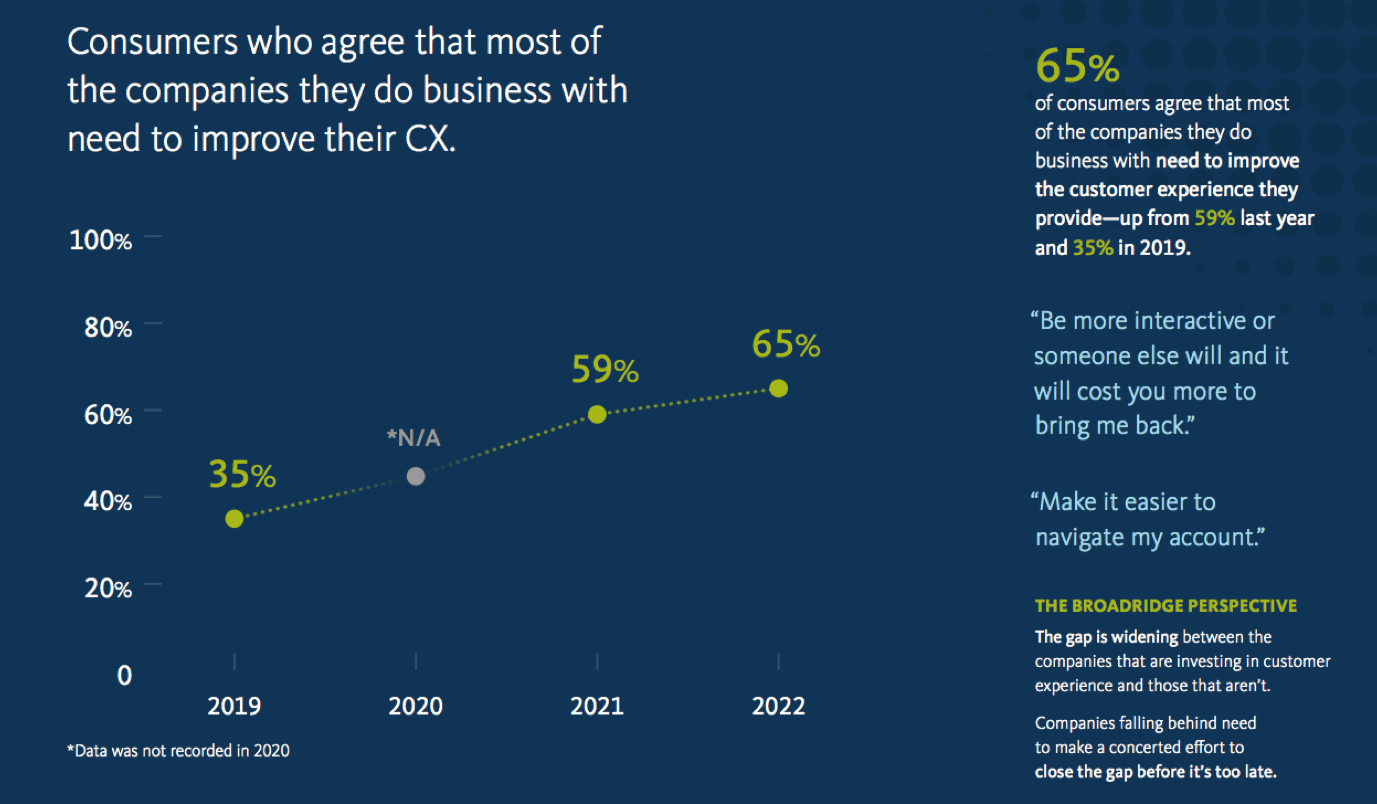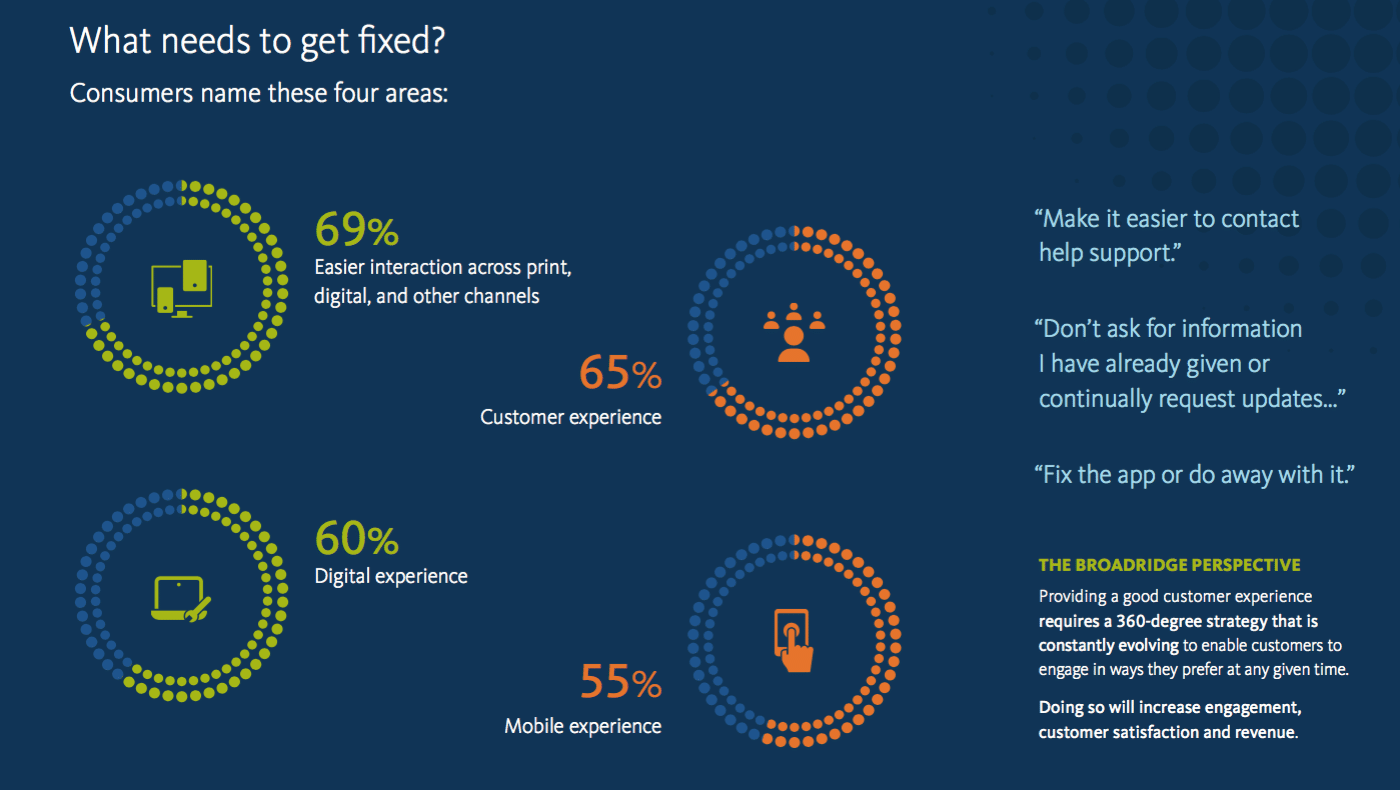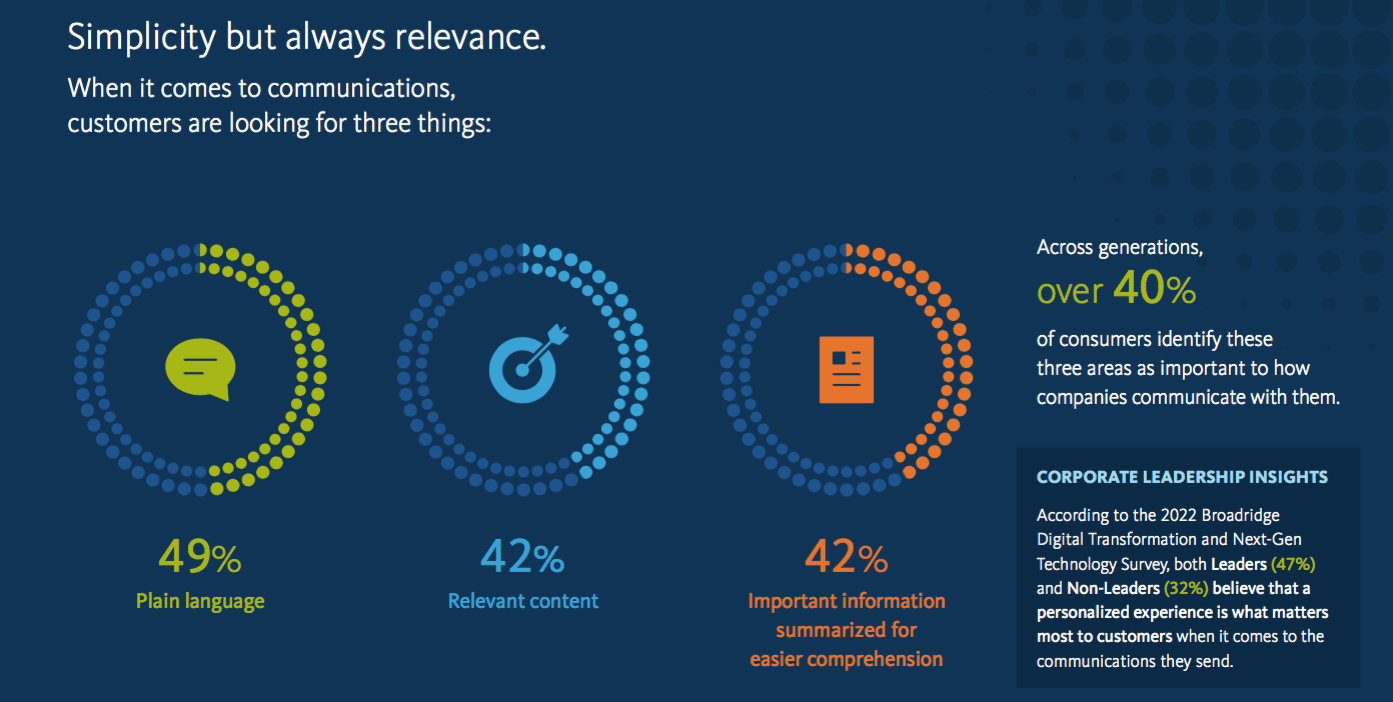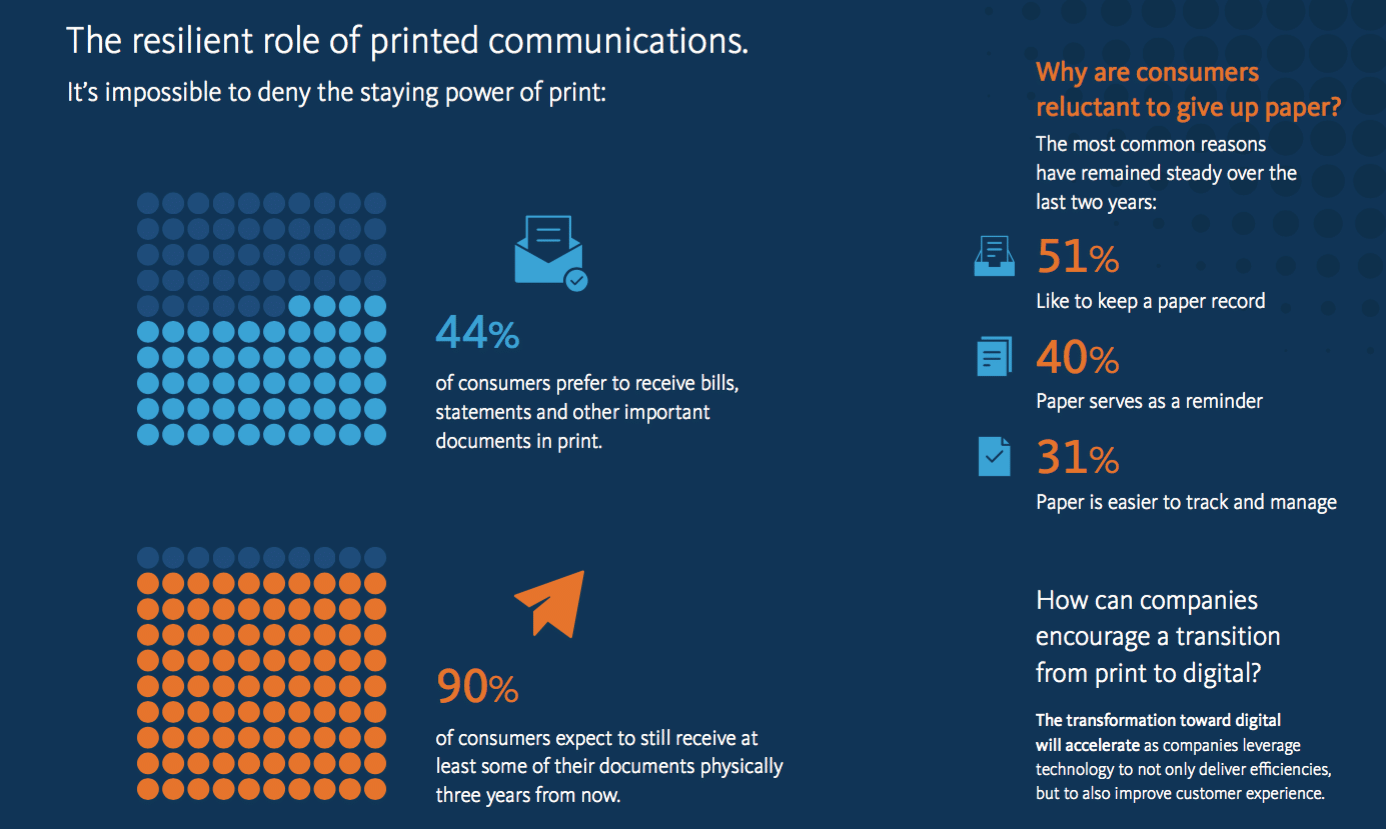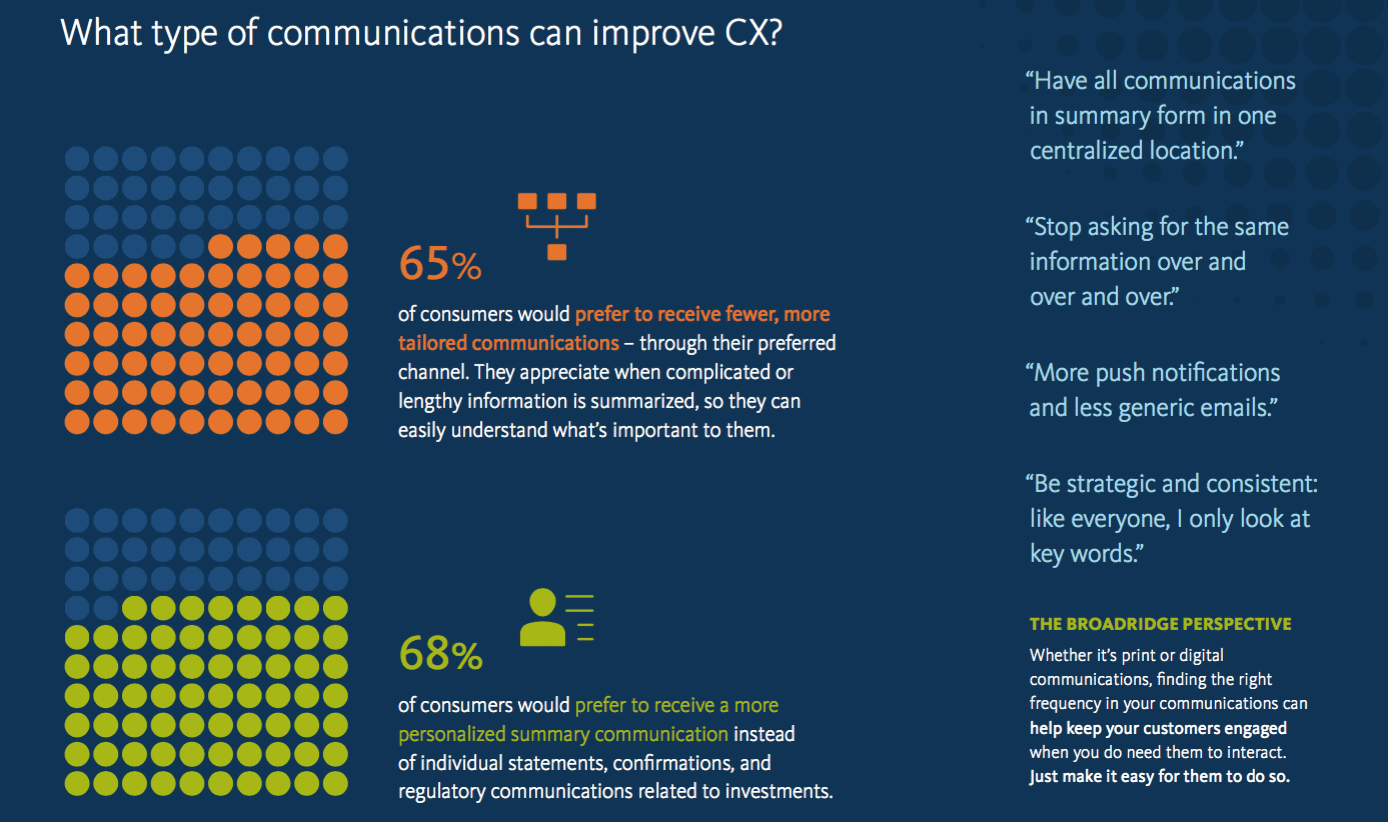According to the firm’s fourth annual CX and Communications Insights consumer survey, in the last three years, the percentage of consumers that feel companies need to improve their overall customer experience (CX) has jumped from 35 percent to 65 percent.
“Communications play a key role in CX and while technology has certainly made strides in customizing consumer touchpoints, many companies are not responding fast enough to customer desire for simple, clear and relevant communications,” said Matt Swain, managing director for communications and customer experience consulting services at Broadridge, in a news release. “As consumers increasingly turn to digital, expectations continue to increase—especially when it comes to navigating omnichannel, preference management, personalization and data security.”
Personalization and data security concerns remain at odds
Consumers are becoming more accustomed to digital engagement with companies, and as they do, they expect personalization and customization in their communications. At the same time, companies are challenged to earn mass trust in managing the proprietary data necessary to enable a deeper level of customization.
Nearly three-quarters (74 percent) want companies to customize their experience based on what the company knows about them, and 63 percent are more likely to engage and respond to interactive, personalized messaging. More work needs to be done, however, with 60 percent of consumers stating that the companies they do business with specifically need to improve their digital experience.
Companies must consider both a more personalized digital experience and offer increased data security, with 54 percent of consumers noting that advances in digital identity security measures help them feel more comfortable engaging digitally with companies. This comes as about half of millennials (55 percent) and Gen Z (49 percent) would be willing to share their data for a better CX, compared to 23 percent of Baby Boomers.
2022: A pivotal year to capture the post-pandemic customer
As the next normal takes root two years into the pandemic, companies need to ensure they are providing engaging digital interactions. With increased rates of digital adoption, consumers are interested in the different ways companies can communicate digitally. Technologies that consumers would most like to see used in communications to improve the customer experience include:
- Predictive analytics that send communications at the right time based on expected needs (67 percent).
- Digital interactive documents with customizable sections (67 percent).
- Artificial intelligence in customer service that helps answer simple questions immediately (63 percent).
- QR codes on printed communications to scan and interact with on their phone (56 percent).
Despite the pandemic-induced quicker shift to digital, 44 percent of consumers still prefer to receive bills, statements and other important documents in paper form and 90 percent believe they will still prefer to receive at least some of those communications in paper form three years from now. That said, this preference can be influenced by providing a better digital experience. The research showed that 71% of consumers that have not yet gone paperless would do so if companies made their digital experience more engaging.
“To deliver on growing customer expectations for omnichannel communication experiences, companies need a flexible, digital-first ecosystem,” said Doug DeSchutter, president of Broadridge Customer Communications, in the release. “By connecting to the multitude of digital channels that consumers use daily and leveraging a high-scale, high-performance print-and-mail network, our clients are unlocking new sources of economic value and advancing their digital transformation.”
Download the full report here.
Broadridge commissioned Engine to conduct this CARAVAN Omnibus Survey. The 52-question survey was administered between November 5-12, 2021, to 3,025 U.S. and Canadian residents aged 18 and older. The U.S. data was weighted to age, gender, region, race and education. The Canadian data was weighted to age, gender and region. The figures are statistically significant at the 95 percent confidence level with a margin of error of ±2 percentage points.


